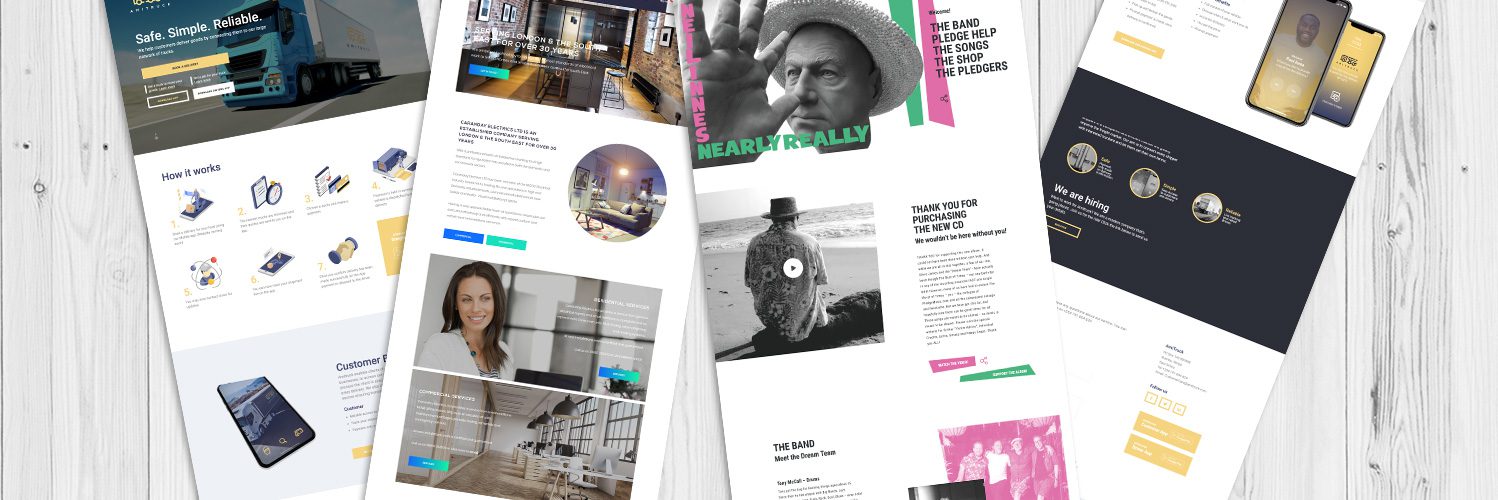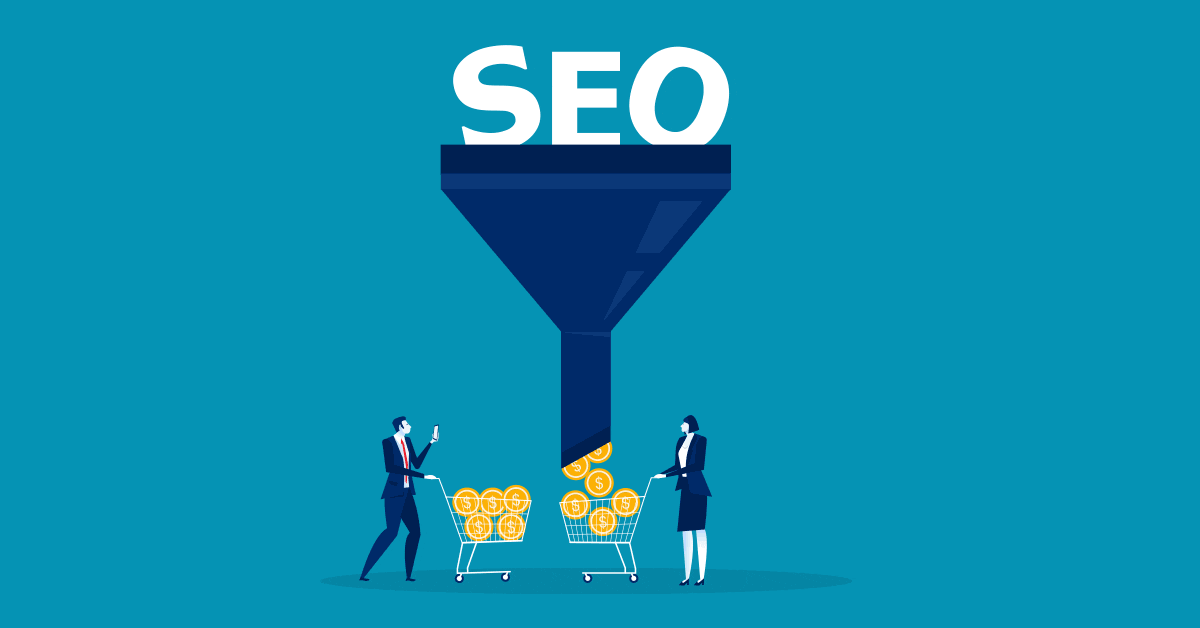
Article
How to Make the Ideal Small Business Website: A Guide to Success
PUBLISHED:October 9, 2020
UPDATED:November 24, 2023
In today's digital era, a small business without a compelling online presence is like a ship without a sail. Building an ideal website for your small business isn't just about having an online presence; it's about making a remarkable impression and driving business growth.
Whether you’re starting from scratch or revamping your existing site, this guide will navigate you through the essential steps to create an impactful and successful small business website.
The Importance of a Small Business Website
A Small Business Website acts as your business’s online ambassador, creating an impactful first impression on potential customers. It’s more than a mere digital storefront; it’s a gateway to your brand’s story, values, and offerings.
Through intuitive design and compelling content, it beckons visitors, enticing them to explore further. Beyond aesthetics, a well-crafted website cultivates trust and credibility, crucial for converting casual visitors into devoted patrons. It functions as a 24/7 sales representative, showcasing your products or services, answering queries, and guiding visitors seamlessly toward making a purchase or inquiry.
A strategic website doesn’t just attract; it engages, educates, and persuades, fostering a sense of connection that transforms fleeting interest into enduring loyalty. Ultimately, it’s the digital cornerstone that defines and perpetuates your brand’s identity, making a lasting impact on your audience.
Benefits of a High-Quality Website
A well-crafted high-quality website yields a myriad of advantages for your business, including but not limited to the following:
- Enhanced Credibility: Establishes trust and credibility, showcasing professionalism and reliability.
- Increased Visibility: Expands brand visibility in a competitive digital landscape, attracting more potential customers.
- Customer Trust: Fosters trust among users, encouraging prolonged engagement and loyalty.
- Lead Generation: Serves as a 24/7 marketing tool, generating leads and converting visitors into customers.
- Improved Revenue: Drives sales and revenue growth through effective online representation and conversions.
- Competitive Edge: Sets your business apart by offering a superior online experience for customers.
- Brand Identity: Reinforces brand identity and messaging, ensuring consistency and recognition.
- Global Reach: Expand market reach beyond geographical boundaries, catering to a wider audience.
- Data Insights: Provides valuable insights through analytics, aiding in better business decision-making.
- Cost-Effectiveness: Offers a cost-effective means to market and promote products or services.
Investing in a high-quality small business website is an indispensable asset that not only elevates your brand but also drives tangible business growth and success.
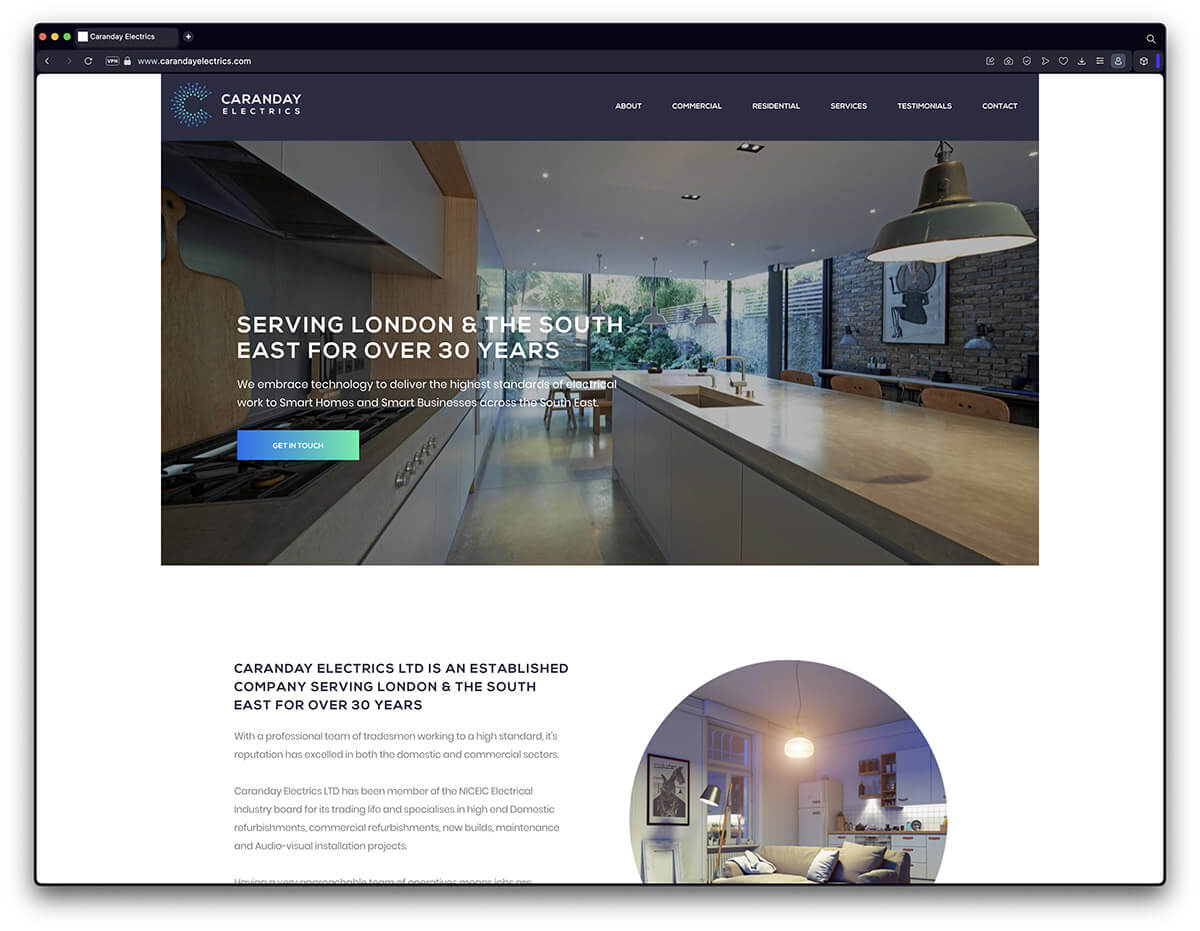
Planning Your Small Business Website
So, you know that you need a new website for your small business. You understand the importance and the benefits, but how do you go about creating one? Let’s take you through the process.
Defining Your Website Goals
Defining clear website goals is akin to charting a roadmap for success in the digital realm. It’s the foundational step that aligns every element of your website with the overarching purpose. Each goal, whether it’s boosting sales, amplifying brand visibility, or serving as an information hub, acts as a guiding light throughout the design and content creation process.
By crystallizing these objectives, small business owners gain a laser focus, ensuring that every feature, from layout to messaging, resonates with the intended purpose. For instance, a goal to drive sales might emphasize intuitive navigation and persuasive product showcases. Simultaneously, a focus on brand awareness might prioritize compelling storytelling and shareable content.
These defined goals become the cornerstone of decision-making, guiding design aesthetics, content strategy, and user experience. Ultimately, they transform a mere website into a strategic asset that efficiently fulfils the precise needs of the business, driving targeted outcomes and yielding measurable success.
Target Audience Identification
Understanding your target audience is the cornerstone of a successful website strategy. It involves delving deep into the psyche of your potential customers through comprehensive market research. By analyzing their preferences, pain points, and behavioural patterns, you unearth invaluable insights that shape your website’s direction.
Tailoring your website to resonate with your audience’s needs fosters a stronger connection, forging a sense of understanding and trust. This customization spans from intuitive navigation that aligns with their browsing habits to content that addresses their specific challenges and desires. By addressing these nuances, your website becomes a valuable solution provider, elevating user engagement and boosting conversion rates.
This deep-rooted understanding ensures that every aspect of your website—from design elements to the tone of communication—speaks directly to your audience, transforming mere visitors into devoted customers who feel understood and valued.
Keyword Research and Implementation
Strategic keyword research and implementation are pivotal for a website’s search engine visibility. By identifying and integrating relevant long-tail keywords specific to your niche, you pave the way for better discoverability by search engines. These targeted keywords reflect the language your potential audience uses when seeking information or products related to your business.
Integrating these keywords organically into your website’s content, including headings, body text, and meta descriptions, enhances the overall SEO strategy. However, it’s crucial to maintain a natural flow, avoiding overstuffing that can hinder user experience and ranking potential.
Careful keyword implementation aligns your content with what your audience seeks, elevating your website’s visibility in search engine results. It’s a strategic manoeuvre that not only attracts traffic but ensures that the visitors you attract are genuinely interested in what your website offers, thereby increasing the likelihood of conversion and engagement.
Budgeting for Your Website
Allocating a budget for your small business website depends on various factors such as complexity, the variety of features included, and your business goals. Basic websites may range from one to a few thousand pounds, focusing primarily on essential functionalities. More intricate sites, encompassing e-commerce capabilities, custom designs, or advanced functionalities, could easily cost £10,000 or more.
Consider aspects such as domain registration, hosting fees, design and development costs, ongoing maintenance, and potential marketing expenses.
Ultimately, the budget should align with your website’s intended purpose and the value it adds to your business. Balancing affordability with quality is crucial; investing adequately ensures a professional, functional website that effectively represents your brand and meets your business objectives.
Consulting with Digital Agencies
Engaging with a digital agency while crafting your small business website is akin to having a seasoned guide navigating uncharted waters. Good web designers will bring expertise honed through diverse experiences, offering invaluable insights and strategic direction for your online presence.
Their role extends beyond technical execution; they serve as consultants, understanding your business objectives and audience needs to tailor a website that resonates. From conceptualization to implementation, they bring market trends, user behaviour insights, and industry best practices to the table, aiding in informed decision-making.
Moreover, digital agencies possess a holistic view, ensuring cohesiveness across design, functionality, and content. Their adeptness in leveraging cutting-edge technologies and SEO strategies enhances your site’s performance and visibility. Collaborating with these experts optimises your website’s potential for success, creating a powerful and purposeful online platform that drives your business forward.
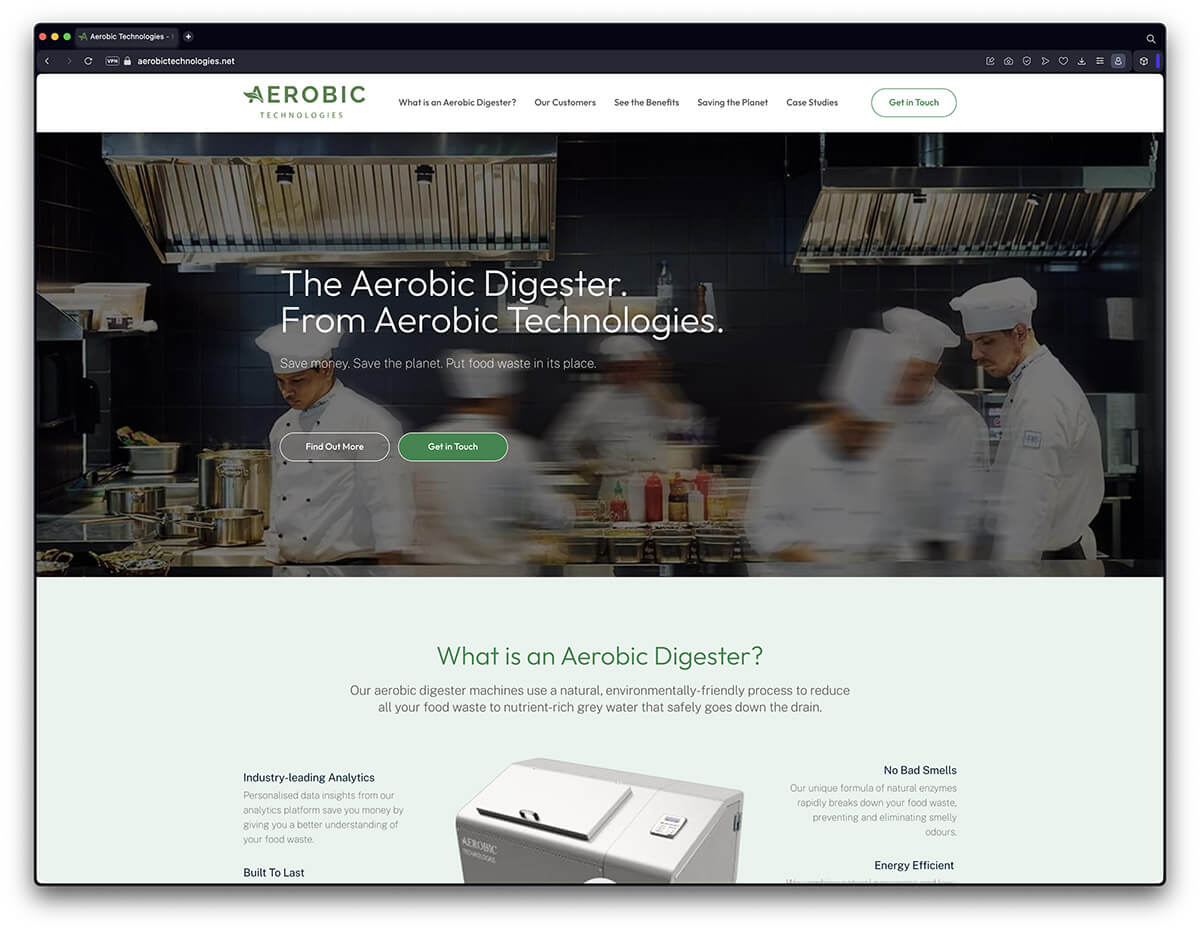
Small Business Website Design
Once your planning stages have been completed and you know exactly what your new website needs to be, it’s time to move on to design. Here are a few key pointers when considering the design of your new website.
User-Friendly Navigation
User-friendly navigation is the cornerstone of a positive online journey. A logically structured website ensures seamless exploration, allowing visitors to swiftly access desired information without frustration. Clear labels, concise menus, and intuitive pathways streamline the user experience. By prioritizing simplicity and coherence in your site’s architecture, you empower users to navigate effortlessly, encouraging prolonged engagement and fostering a favourable impression of your brand.
The Power of Call-to-Actions (CTAs)
Strategic Call-to-Actions (CTAs) wield immense influence in directing user behaviour. Clear, compelling CTAs prompt visitors to take specific actions, whether it’s making a purchase, subscribing, or contacting you. Placing these prompts strategically throughout your website nudges users toward desired goals, enhancing engagement and conversions. Crafted with persuasive language and visible placement, CTAs serve as signposts, guiding users along their journey and prompting immediate, purposeful actions that drive your business objectives.
Mobile Responsiveness
Mobile responsiveness is imperative in today’s smartphone-centric era. Your website must adapt flawlessly to diverse screen sizes, offering an impeccable user experience. Seamless functionality and captivating visuals across mobile devices not only cater to a growing mobile audience but also boost engagement and retention. Prioritizing mobile optimization demonstrates your commitment to accessibility, catering to users on the go, ultimately augmenting your brand’s credibility and fostering positive interactions with your audience.
Web Design and Branding
Web design isn’t just about aesthetics; it’s a strategic blend of art and functionality that defines your brand online. Consistency in branding elements—colours, typography, logos—creates visual harmony, reinforcing your brand identity and building trust with customers. Captivating imagery and thoughtful layouts engage visitors, forging an emotional connection as you guide them on their journey through your site.
A well-designed website isn’t just visually pleasing; it’s an immersive experience that tells your brand’s story. It communicates professionalism, reliability, and uniqueness, leaving a lasting impression.
By aligning well-designed page elements with your brand’s ethos, your website becomes a powerful tool for brand recognition and recall. It’s this harmonious fusion of design and branding that transforms a website from a plain digital presence into a memorable, impactful representation of your brand’s values and personality.
The Appeal of a One-Page Website
A one-page website offers small businesses a concise, impactful online presence. Its streamlined design simplifies navigation, presenting all essential information in a single, scrollable page. This format captivates visitors with its straightforward layout, ensuring a focused user experience. With clear sections highlighting key offerings, testimonials, and contact details, it eliminates distractions, directing attention to core messages.
The appeal lies in its simplicity; it’s cost-effective for those on a tight budget, quicker to develop, and easier to maintain than multi-page sites. However, considerations include limited content space, potential challenges in SEO, and the necessity to condense information effectively.
A one-page website suits businesses aiming to convey a specific message, initiate engagement swiftly, and promote a singular service or product.
While it might not suit all online business models, its concise nature and visual appeal make it a compelling option for those seeking a clean, impactful online presence.
The Cost of More Pages
Increasing the number of web pages on a site will likely have substantial financial implications. Each new page template requires additional design, development, and content creation efforts, leading to increased expenses.
Custom layouts to accommodate unique content, complex functionalities, and integration of 3rd-party systems such as CRM tools will inflate both the project timeline and costs. Maintenance expenses also surge as updates and modifications extend across multiple pages.
While a comprehensive website might offer in-depth information, it’s vital to strike a balance between content volume and budget limitations. Prioritising essential pages that fulfil the user’s needs while minimising unnecessary extras is cost-effective. This strategic approach not only streamlines expenses but also ensures a cohesive, efficient website that effectively communicates your brand’s message without unnecessarily burdening your budget.
Content Creation for Small Business Websites
It’s often overlooked by many businesses that the website content itself needs creating, not just the design. Who should create the content? Will it be an internal operation or do you require help from your web agency or perhaps a copywriter?
To help you put together a content creation strategy, we thought it necessary to highlight the following considerations.
Content Creation Challenges
For solo entrepreneurs, content creation poses significant challenges when crafting a website. The temptation to overload the site with information often leads to time constraints and quality concerns. Juggling multiple responsibilities, entrepreneurs find producing engaging, high-quality content while managing day-to-day operations daunting. The struggle intensifies when attempting to maintain consistency in tone, style, and messaging across multiple pages.
Moreover, inundating a website with excessive content can overwhelm visitors, hindering rather than facilitating their understanding. Balancing comprehensive information with succinctness becomes crucial to maintaining audience engagement.
Prioritising key messages and focusing on delivering clear, concise content that addresses the user’s needs effectively becomes imperative. Solo entrepreneurs must navigate these challenges by strategising content creation, ensuring quality, relevance, and user-friendliness while considering their limited resources and time.
Engaging Homepage Content
Crafting engaging homepage content is paramount because the home page serves as the virtual front door to your new website. This crucial space is where visitors form their initial impressions, determining whether to explore further or exit. Compelling homepage content, characterised by concise yet captivating messaging, hooks visitors’ attention, encouraging them to delve deeper into your site.
It’s a golden opportunity to showcase your brand’s uniqueness, offering a glimpse of your products, services, and value propositions. Engaging visuals, persuasive headlines, and clear calls-to-action guide users seamlessly, influencing their journey through the site.
A well-designed homepage, rich in compelling content, establishes credibility, fosters trust, and entices visitors to explore more, ultimately increasing the likelihood of conversions and long-term engagement. It’s the launchpad that ignites visitor interest and sets the stage for a rewarding user experience.
Effective Product/Service Pages
Compelling website content is a strategic blend of information and persuasion. Detailed descriptions of products and services are essential, but coupling these with unique selling points and a list of benefits creates an immersive experience. This blend of information infused with persuasive language, acts as a magnet, drawing visitors in while showcasing why your offerings stand out.
Effective content doesn’t merely inform; it entices action by illuminating how your product and service can solve specific needs or elevate experiences. It’s about painting a vivid picture and demonstrating how your solutions address pain points or add value.
By weaving persuasive narratives around your unique offerings, you ignite curiosity, prompting visitors to engage further, whether through inquiries, purchases, or continued exploration—transforming passive visitors into active participants in your brand’s story.
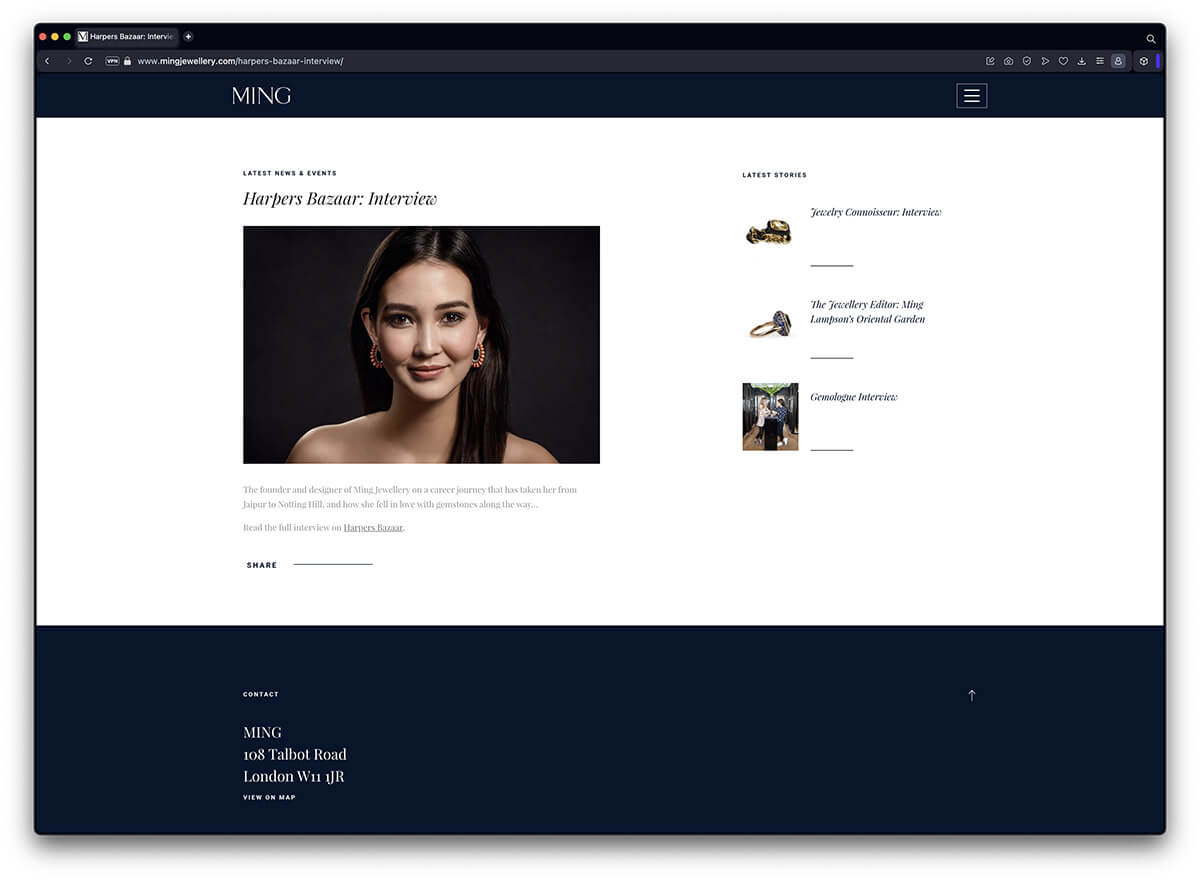
Blogging for Business Growth
Maintaining a blog section is a strategic tool for fostering business growth. Regularly sharing insightful content, industry updates, and engaging articles showcases expertise, positioning your brand as an authoritative voice within your field. By offering valuable information, solutions to common problems, or fresh perspectives, your blog becomes a go-to resource, fostering trust and loyalty among readers.
Consistent, quality blog posts not only bolster credibility but also improve search engine visibility. Search algorithms prioritize fresh, relevant content, attracting organic traffic to your site. Each blog post acts as a gateway, drawing in potential customers seeking solutions or information related to your niche. Over time, this influx of organic traffic not only expands your audience base but also increases opportunities for conversion and customer engagement, playing a pivotal role in driving sustained business growth.
E-commerce Websites
If you’re looking to set up an online store, you’ll need to implement a robust e-commerce business platform that is capable of handling secure transactions and delivering a great online shopping experience.
Efficient e-commerce functionality forms the backbone of online retail success. A seamless, user-friendly interface empowers customers to navigate effortlessly, locate product pages, and proceed through a secure purchasing process. Implementing robust security measures instils trust, crucial for converting browsing visitors into loyal customers.
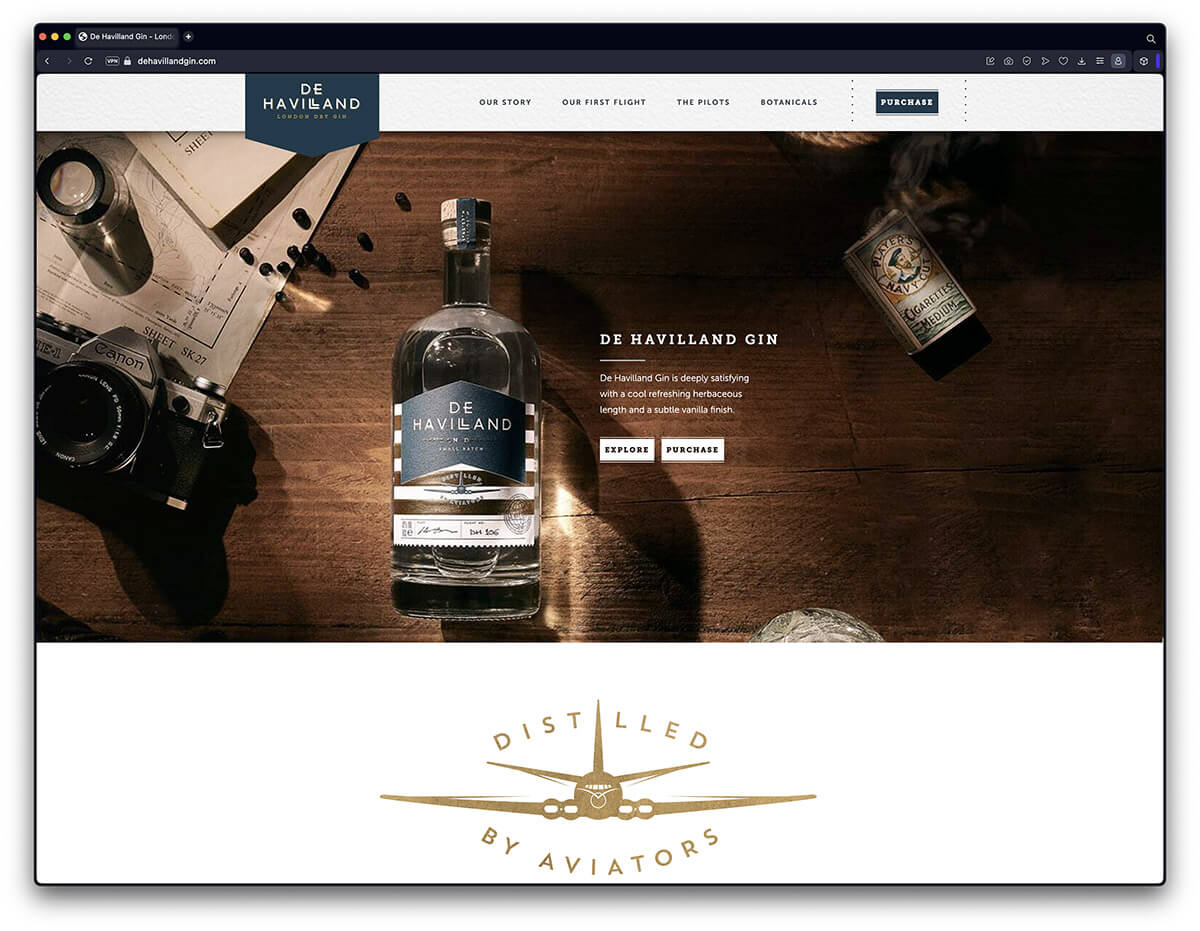
Streamlined e-commerce functionality encompasses intuitive product categorization, detailed descriptions, and clear calls to action. It’s about providing a hassle-free shopping journey, from product selection to checkout. A secure payment gateway, coupled with transparent shipping and return policies, further solidifies customer confidence.
A well-designed e-commerce platform doesn’t just facilitate transactions; it elevates user experience. It cultivates satisfaction, encourages repeat purchases, and amplifies positive word-of-mouth, fostering a loyal customer base. Prioritizing seamless e-commerce functionality not only boosts online sales but also nurtures customer trust, vital for sustained success in the competitive online marketplace.
Optimisation Techniques for Small Business Websites
With design, functionality and content all mapped out, you can move ahead to the development stage. But before you initiate the build of your new website, you should consider these points.
On-Page SEO Strategies
Effective on-page SEO strategies revolve around optimising key elements. Meta tags, headers, and content infused with relevant keywords enhance search engine visibility. However, the emphasis should be on quality content that resonates with users while strategically incorporating targeted keywords.
Implementing concise, informative meta descriptions influences click-through rates, enticing users to visit your site. Furthermore, strategic internal linking among pages boosts navigation and reinforces content relevance, aiding search engine crawlers in understanding your site’s structure.
Balancing keyword optimisation with user-centric, valuable content ensures a harmonious blend that captivates both search engines and users. By fine-tuning these on-page elements, local businesses can ascend search engine rankings, improving visibility and attracting organic traffic, while simultaneously providing a seamless and informative user experience.
Loading Speed Optimization
Fast-loading websites are pivotal for user engagement and retention. Optimising loading speed involves compressing images to reduce file sizes, leveraging browser caching for quicker retrieval of previously visited elements, and deploying a content delivery network (CDN) to distribute content across servers geographically.
These strategies collectively enhance the user experience by minimising wait times, improving site responsiveness, and encouraging prolonged visitor interaction. A swift website not only satisfies users’ expectations for efficiency but also positively influences search engine rankings, making speed optimisation a crucial factor in retaining and attracting visitors.
There’s a vast range of SEO tools available online which can help you optimise the content and speed of your website. But before you commit to using any of these platforms long-term, we suggest utilising the free trial options if available.
Security and Maintenance
There’s no point in spending good money on a website if it keeps dropping offline or being hacked. So, make sure that you have some good security protocols in place for some post-launch piece of mind.
Ensuring Website Security
Ensuring robust website security is paramount to safeguard against potential threats. Implementing security plugins fortifies defences, offering protection against malware and vulnerabilities. Employing HTTPS encryption shields data transmission, enhancing user trust. Regular security audits scrutinize vulnerabilities, ensuring proactive identification and mitigation of potential risks. These measures collectively fortify your website, shielding sensitive information, instilling user confidence, and safeguarding against cyber threats, ensuring a safe and secure online environment for visitors.
Regular Updates and Backups
Regular updates are crucial for website security and functionality. Updating software and plugins bolsters defences against vulnerabilities, enhancing performance and deterring cyber threats. Additionally, regular backups act as a safety net, preserving essential data and content. In the event of unexpected issues or cyberattacks, backups ensure the ability to restore your website to a previous state, minimizing potential disruptions and data loss. Consistent updates and backups are essential practices to maintain a resilient and reliable website infrastructure.
Marketing Your Small Business Website
Once launched, you should consider some form of marketing to help drive traffic to your website. Digital marketing works in tandem with your own website’s SEO and is often referred to as off-site SEO. The following items should all be considered when putting together your business plan.
Utilising Social Media
Harnessing social media amplifies brand visibility and audience engagement. Regular, engaging posts on platforms like Facebook, Twitter, and Instagram foster connections, drawing users to your website. Interacting with the audience through comments, shares, and messages cultivates a community, encouraging them to explore your website for more. Social media acts as a conduit, driving traffic to your site by sharing valuable content, promotions, and updates. By leveraging these platforms strategically, businesses can expand their online presence, establish rapport with their audience, and drive meaningful traffic to their website.
Email Marketing for Customer Engagement
Email marketing fosters robust customer relationships. Cultivating an email list enables targeted, personalised campaigns. Tailored emails, showcasing exclusive offers or valuable content, resonate with recipients, driving traffic and conversions. Personalisation deepens connections, nurturing brand loyalty and prompting engagement. Strategic email campaigns serve as a direct channel, delivering tailored messages that captivate recipients, encouraging them to explore further and take desired actions. By leveraging personalized content and targeted offers, email marketing becomes a powerful tool for fostering lasting connections, driving website traffic, and amplifying conversions.
Pay-Per-Click (PPC) Advertising
Investing strategically in Pay-Per-Click (PPC) campaigns enables precise audience targeting, swiftly driving tailored traffic to your website. With PPC, ads are displayed to audiences based on demographics, interests, and behaviours, ensuring relevance. These targeted campaigns yield immediate visibility and traffic, precisely reaching potential customers seeking your products or services. By strategically allocating resources and optimizing ad content, PPC serves as a potent tool for instant exposure, attracting quality traffic, and swiftly driving potential customers to your website.
Are online reviews really that impactful for small businesses?
Absolutely. Online reviews wield immense influence on small businesses. They shape perceptions, build credibility, and heavily influence purchasing decisions. Positive reviews enhance trust, attracting new customers, while negative ones can deter potential clients. They serve as digital word-of-mouth, amplifying a brand’s reputation and impacting its success significantly.
For B2B companies, we suggest actively encouraging clients to leave reviews on Google. B2C companies may wish to utilise 3rd-party services such as FeeFo and Trustpilot.
Analysing and Improving Website Performance
As your website gains traction, assessing its performance becomes crucial for enhancements. Fortunately, numerous tools and data sources offer insights to optimize your site, bolstering both traffic and conversions. These resources empower you to fine-tune your website, ensuring it aligns with audience expectations and business objectives, fostering continual growth and success.
Utilising Analytics Tools
Employing analytics tools such as Google Analytics is pivotal in understanding and improving website performance. By dissecting metrics like traffic sources, user behaviour, and conversion rates, businesses gain valuable insights. These analytics unveil patterns, revealing what resonates with visitors and what needs enhancement. Armed with this data, informed decisions can be made to refine strategies, optimize content, and enhance user experience. Analytics tools serve as a compass, guiding businesses toward effective website strategies that align with audience expectations, ultimately driving continual improvement and success.
Implementing Customer Feedback
Leveraging customer feedback fuels iterative website enhancement. Acting upon user suggestions fosters an improved user experience. By implementing necessary changes, businesses align their platforms with user needs, boosting engagement and achieving superior outcomes. This iterative approach, driven by user insights, ensures continual refinement, allowing websites to evolve in tandem with user expectations, ultimately forging stronger connections and delivering optimal user satisfaction.
Conversion Rate Optimization (CRO)
Conversion Rate Optimization (CRO) involves fine-tuning website elements to boost desired actions by site visitors. Employing A/B testing allows comparison of different versions of a webpage, determining which layout, content, or design garners better results. Clear and persuasive call-to-actions (CTAs) prompt users to take specific steps, guiding them towards conversion points effectively.
Optimizing forms by simplifying fields, reducing steps, or implementing autofill options streamlines the user journey, increasing form completions. Additionally, scrutinizing user behaviour through analytics unveils insights into visitor interactions, enabling adjustments to improve conversion pathways.
CRO is an iterative process, continually testing, refining, and implementing changes to maximize results. By focusing on enhancing user experience, eliminating friction points, and strategically placing persuasive elements, businesses can significantly elevate their conversion rates, ultimately boosting engagement and achieving higher success in meeting their objectives.
Conclusion
In conclusion, creating the ideal small business website demands a strategic blend of thoughtful planning, good design, engaging content, and continuous optimization. Understanding the pivotal role of a website as the face of your brand is crucial—it’s not merely a digital presence but a dynamic tool that communicates your business essence to the world. By meticulously crafting a website aligned with your objectives and audience needs, you pave the way for enhanced credibility, increased conversions, and sustained growth.
Remember, it’s not just about the creation; it’s an ongoing process of refining, analysing, and adapting. Regular maintenance, security checks, and staying updated with the latest trends are vital. Embrace feedback, data analytics, and customer interactions as guiding beacons for evolution. Your website’s success isn’t solely measured by its launch but by its ability to evolve, resonate, and serve its purpose effectively over time.
With this guide, you’re equipped to embark on a journey towards an exceptional online presence. Embrace the power of technology, creativity, and strategy to craft an ideal small business website that stands out, engages audiences, and propels your business towards enduring success.
Small Business Website: FAQ
The cost varies based on features, complexity, and whether you hire a professional or use DIY platforms like WordPress. Generally, it ranges from £1,500 for a short single-page solution, to multiple thousands for larger websites.
Platforms like WordPress, Squarespace, and Wix offer user-friendly interfaces and customizable templates suitable for small businesses. For bespoke design solutions, we use WordPress.
Having a blog can significantly benefit your website by improving SEO, showcasing expertise, and engaging visitors with valuable content.
Mobile responsiveness is crucial as a majority of users browse the internet on mobile devices. A mobile-friendly site ensures a seamless experience for all users.
A reputable agency like LWDA can guide you through the process, provide insights, and offer cost-effective solutions tailored to your business needs.
Social media integration enhances your online presence, allowing for broader reach and increased engagement with your audience.
Regular updates keep your content fresh and relevant. Aim for periodic reviews and updates to stay current in your industry.
Absolutely. Positive reviews build credibility and trust, influencing potential customers’ decisions.
Invest in an SSL certificate, use secure payment gateways, and regularly update your website’s security features to keep it safe.
Need a new small business website?
If you’re looking to partner with a digital agency to help design & build your new small business website, drop us a line. We’re always happy to discuss new projects and find the best solution that fits your needs.
Small Business Websites: Further Reading
We hope that you found this article about small business websites useful. If so, you may find this equally helpful.






